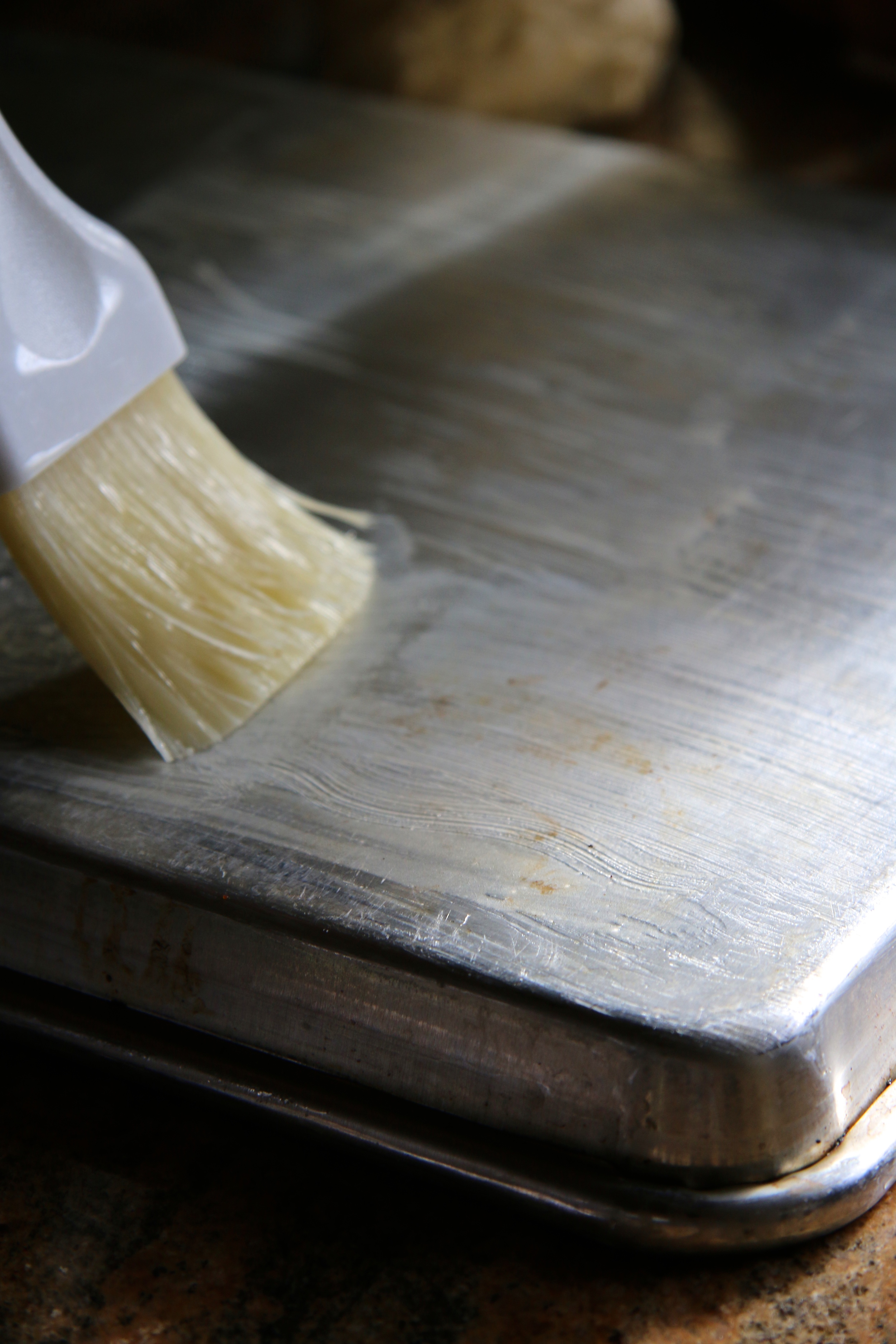Lavash
I first became fascinated with flat bread when I lived in the Middle East during my high school years. My father served in the United States Air Force, and we in lived in Turkey. On the weekends I traveled with my parents to small villages to enjoy the local food and culture. We often packed large bags of candy, which we shared with the village children.
I recall a village where women were sitting around an outdoor fire with a concave sheet of metal above the flames. Each lady had a specific task in making flatbread. One skillfully used a thin rolling pin to stretch dough into a large paper-thin circular shape. A second lady used the rolling pin as a utensil to transfer the dough onto the heated sheet of metal. The surface of the flatbread would bubble and puff, and within second be completely cooked. Another women created stacks and stacks of flatbread that were stored for the winter months. At least I think that is what she was explaining. I wasn’t fluent in the Turkish language, but somehow managed to communicate. We shared our candy with the ladies, and they shared their freshly baked flatbread. I’ll always remember the aroma, light texture of this delicious treat, and the most fascinating ladies who inspired my love of flat bread.
I enjoy making lavash, which is a flatbread that is simply made with flour, water, sugar and salt. It can be sprinkled with dried spices, seeds or sugar before baking. The soft form is used for wraps, kebabs and lahmacun. The thin crispy form can be served as a cracker. My recipe makes thin, brittle lavash that I serve as a cracker with hummus, pâté, cheese plates and charcuterie. I am always amazed that lavash beautifully bakes on the back of a rimmed baking sheet. A few helpful tips include letting the dough rest for an hour. This will ensure pliable dough. Be patient when stretching the dough across the back of the rimmed baking sheet. Work in sections and if you have a few holes, don't worry; it adds character to the flat bread.
Lavash
Servings:8-10
DOUGH
2 ½ cups all purpose flour, plus additional for dusting
1 teaspoon kosher salt
1 teaspoon granulated sugar
2/3 cup water
1 large egg
2 Tablespoons butter, melted
TOPPING
4 Tablespoons butter, melted
3 Tablespoons turbinado sugar, divided
DOUGH
1. In a large bowl, whisk flour, salt and sugar to combine. Make a well in the center and set aside.
2. In a small bowl whisk together the water, egg and butter. Pour into well of the dry ingredients. Stir until the dough comes together. Dough will be sticky. Knead dough in the bowl to incorporate all the dry ingredients.
3. Divide dough into 3 equal portions and place in bowl. Cover bowl with plastic wrap, and let stand at room temperature for 1 hour and up to 4 hours.
4. Preheat oven to 375 °F. Place a rimmed baking sheet upside down on a steady surface, and lightly brush butter on the back of the rimmed baking sheet.
5. Place one dough ball in the center of the buttered baking sheet and roll out into a10 x 6-inch rectangle. Lift one edge of the dough and gently stretch toward the outer edge of the baking sheet. Work in sections as you stretch the dough across the back of the baking sheet letting it slightly fall down the sides to hold the dough in place while baking.
TOPPING
1. For the topping, lightly brush the stretched dough with melted butter and sprinkle with 2 teaspoons of raw sugar.
2. Bake until golden brown, 10-12 minutes. Transfer lavash to a wire rack and repeat with the remaining dough on a cooled baking sheet. Break into pieces and serve with hummus, pâté, cheese plates and charcuterie.
Do Ahead: Completely cooled lavash can be stored in an airtight container at room temperature for 5 days.


